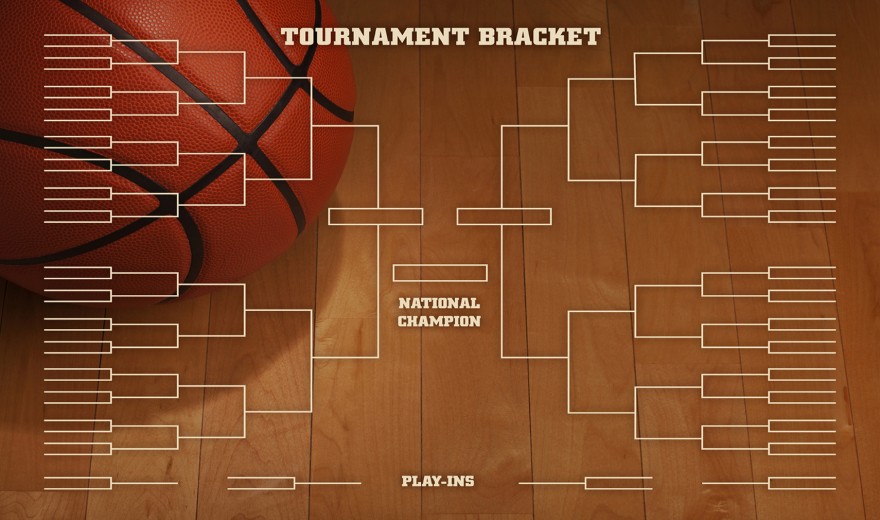As the behemoth that is March Madness approaches, it’s become customary to expect thrills and chills, improbable buzzer beaters, Cinderella’s rising and, occasionally, major teams capsizing. While the nation is engulfed or programmed to witness this brand of amateur basketball every year, to the NCAA’s credit, they are constantly exploring ways to “tweak” the tournament to bring increased engagement of eligible schools and expand the brand. Even though the tourneys first round outcomes are predictable, particularly in games pitting top teams against overmatched competition, we still tune in for the potential “what ifs.” In the spirit of what ifs here are some wishes for this year’s tournament that even the most ardent college basketball enthusiasts may get behind.
16 Is the New 1
The talent disparity between the 16th seed and the first seed is so immense, you can consider this a cataclysmic phenomenon with the potential to wipe out 99.99% of all filled brackets from the jump.
Reality check: Since the expansion to 64 plus teams 30 years ago, this has never happened. So far, 1-seeds are undefeated, and only in five of those games has a 16-seed come within four points or fewer of pulling off the impossible. With this perfect record intact and the blowout margins of victories, the NCAA might as well give the 1-seeds a first round bye.
All 1-Seeds in the Final Four
The common denominator of teams awarded a 1-seed, by record and expert consensus, is they are the best in the country. While the current format will only pair these teams for three games towards the end, it will be compelling to watch the best collegiate teams compete for the coveted prize.
Reality check: Only once have all 1-seeds reached the Final Four. In 2008, powerhouses Kansas, Memphis, North Carolina and UCLA made history by becoming the first, with Kansas prevailing as the national champion in an overtime thriller against Memphis.
Championship Game Goes into OT
It’s an omelet of mixed emotions playing in any sport when a game is not decided in regulation. Though the physical and emotional toll on players is obvious and fans’ agita levels may rise dramatically, we all – including NCAA brass – will sign up for this in a heartbeat, especially if teams you don’t have a vested interested in are not involved.
Reality check: Out of 75 championship games played since 1939, the tournament’s inaugural year, only six have required an extra stanza, so chances are you won’t need to stock up on Tums or Rolaids or alcohol. Of course we assume you might have already consumed a hefty dose of the latter pre-game.
Revenue Share With Student Athletes
With a multi-billion dollar contract between CBS and Time Warner believed to run through 2024, these 18-21 year olds – many from economically disadvantaged households – generate significant revenue for both the NCAA and the aforementioned television networks. The further their team’s advance, the more revenue each player earns. It’s estimated the NCAA receives $500 million annually via this arrangement and you can bet CBS and Time Warner are leveraging this exclusivity to profit as well. For the record, we have no clue how this would be logistically implemented but it is a wish – right?
Reality Check: Guaranteed to continue for years to come, there’s been a long-standing debate over what constitutes a student-athlete and whether a full scholarship is an adequate trade-off for the grueling athletic and academic demands they are expected to fulfill. If indeed colleges and universities could compensate them financially, many claim it would ruin the integrity of college sports in general and raise even greater issues tied to labor regulations, pay rates (by sport, skill level or revenue generated) and a host of other legal and ethical considerations.
Fill the Perfect Bracket (and make Warren Buffett $1 billion dollars poorer)
Let the fantasies begin. There’s not much to elaborate on here besides dreaming about what one would do with all that dough.
Reality check: Definitely make sure to keep your day job. Top mathematicians at renowned institutions place the odds as ranging from 1 in 128 billion to 1 in 9.2 quintillion! Yes – quintillion. With these cosmic odds, you are 500 times more likely to win the lottery and better off waging real money on Powerball or Mega Millions. Besides, Buffett’s not doing the “Billion Dollar Bracket Challenge” in 2015. Not that he needs the money, but it appears his company Berkshire Hathaway, Yahoo! and a small promotion firm called SCA Promotions are all tangled up in court over who came up with the idea last year, according to the International Business Times.
Parity between Men’s and Women’s Tournaments
Undoubtedly, women have proven themselves to be on par with their collegiate male counterparts and they deliver a brand of basketball and other sports that draw huge followings. In fact, women’s sports equal or exceed the male equivalent in popularity and revenue generation in many schools around the country. So much so that ESPN and the NCAA extended an existing agreement in 2011 for the exclusive broadcast of women’s NCAA postseason basketball and other championships through 2024.
Reality Check: Sadly, gender gaps on a number of socioeconomic levels remain a reality that we all wish would disappear. As an example, the disparity in primetime or national coverage as well as the financial contract terms tied to men’s and women’s basketball is quite significant (millions vs. billions). Hopefully, a collective societal thrust fueled by education and awareness will continue narrowing these historical inequalities quickly and permanently.
“Cinderella” Crowned a Champion
Despite the absence of a formal definition for Cinderella, most would agree it’s probably a team from a mid-major or smaller conference that is relatively unknown and is generally ranked a 10-seed or lower. In recent years, these teams have won the hearts of fans around the nation writing their David against Goliath-like scripts that have seen them advance as far as the Final Four. Just in 2011, VCU, an 11-seed with point guard Joey Rodriguez at the controls, silenced the critics who questioned their selection with an improbable run to the Final Four before losing valiantly to 8-seed Butler in a close semifinals.
Reality check: Since 1985, only three teams seeded 10 or lower have made the Final Four but fell short of playing in the national championship game. These teams include LSU (1986), George Mason (2006) and the aforementioned VCU (2011). So no team in the championship based on the Cinderella description? It won’t take much to figure out the probability on this one.

